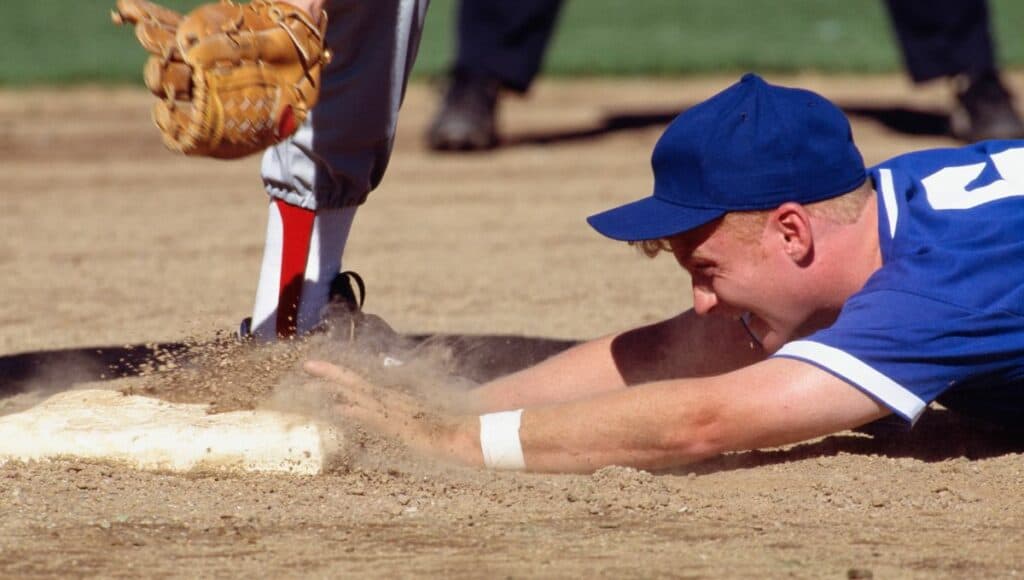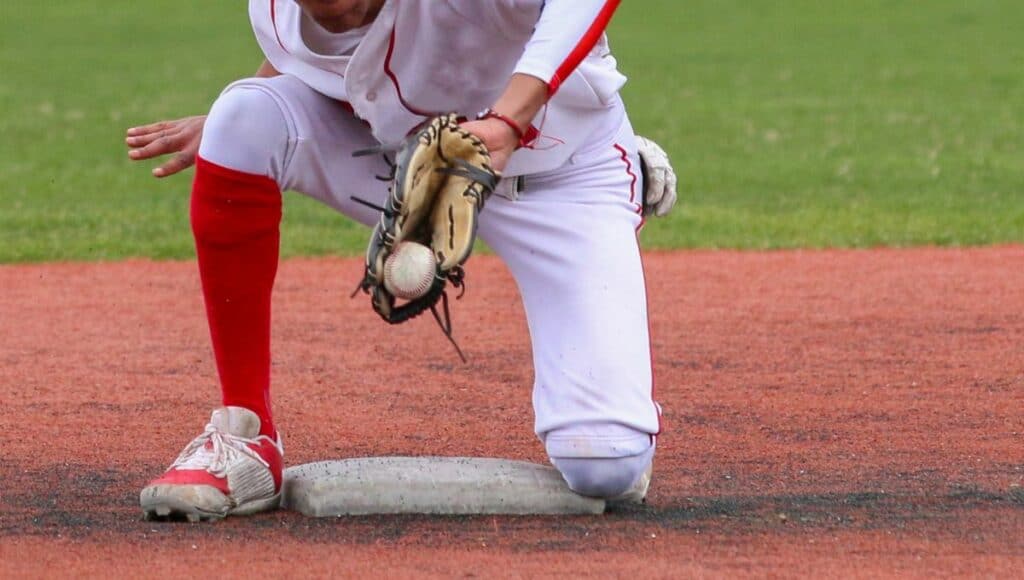Second Base Position in Baseball: Understanding the Keystone Role
In the landscape of baseball, the second baseman is a pivotal defensive position that requires a player to have a unique combination of agility, quick reflexes, and strategic acumen. Located between first and third base, second base is often where quick and critical decisions are made, as the second baseman is key in fielding ground balls, turning double plays, and covering both the base and large portions of the infield. Understanding the intricacies of this position is essential for any player or fan looking to grasp the full complexity of the game.

As a fulcrum for infield activity, the responsibilities and skill set required for a second baseman are multifaceted. They must exhibit strong communication skills, particularly with the shortstop, to effectively coordinate plays. Exceptional hand-eye coordination, lateral movement, and an ability to anticipate the batter’s intentions are prerequisites for anyone playing this position. Moreover, mastering the art of positioning oneself relative to the current situation is a subtle yet defining trait of a successful second baseman.
Key Takeaways
- The second baseman plays a critical role in defense.
- Core skills include agility, coordination, and strategic thinking.
- Positioning is key to a second baseman’s effectiveness on the field.
Anatomy of the Second Base Position
In baseball, your role as a second baseman is pivotal to the team’s infield defense. You need to possess a combination of quick reflexes, agility, and strategic awareness to excel at this position.
Defining the Role of a Second Baseman
As a second baseman, your primary responsibilities include fielding ground balls, covering second base for force-outs or double plays, and acting as a relay for throws from the outfield.
You’re often involved in the pivot during double play situations, where agility and quick footwork are crucial.
Your positioning on the field allows you to cover a large range of the infield, making your role central to thwarting the opponents’ offense.
Physical and Mental Attributes
Certain physical and mental characteristics define an exceptional second baseman. Arm strength is important, but precision and a quick release are more critical, given the shorter distance to first base.
Glove work is essential; your hands must be quick and soft to handle sharp grounders and line drives.
Mentally, you must understand the nuances of the game, remain alert, and be prepared to make split-second decisions.
Comparison to Other Infielders
When compared to other infielders, second basemen often have more ground to cover, especially on balls hit to the right side of the field.
While your role may not require the arm strength of a third baseman or shortstop, your ability to quickly convert a play into an out is unmatched.
Also, second basemen must possess a keen sense of coordination with the shortstop to efficiently manage the pivot, a cornerstone of infield defense.
By understanding your responsibilities and refining your physical and mental capabilities, you enhance your team’s defensive strategy and perform your role as a second baseman effectively.
Key Responsibilities and Skills
Your role as a second baseman is vital, demanding proficiency in fielding, agility for executing double plays, the ability to communicate effectively, and the foresight to anticipate steals.
Fielding Ground Balls and Line Drives
Your primary duty is to handle ground balls and line drives proficiently. Possessing a wide range and quick hands is crucial to stop the ball and make accurate throws to first base.
When fielding, your body should be square to the ball, and you must ensure that your glove is low to the ground to prevent the ball from sneaking under.
Executing Double Plays

Mastering the double play is a marquee skill. You’ll need to receive the ball and fluidly pivot toward second base to make a throw to first, often in a single motion.
Perfecting this technique is essential to help get your team out of tight spots.
- Positioning: Stand close enough to cover the base quickly.
- Footwork: Practice your pivot to ensure a smooth transfer.
Effective Communication and Coordination
You’re responsible for orchestrating the infield, which means communication is key. Signaling to other infielders about the number of outs or the play strategy is part of your job.
Be loud and clear to avoid any miscommunication that could result in missed plays.
Anticipating and Reacting to Steals
Keep your eyes on base runners and anticipate steals; your reaction can make the difference between an out and a stolen base.
As a second baseman, you often cover second for steal attempts, requiring prompt and coordinated efforts with the catcher to tag out the runner.
- Watch the runner: Look for cues they might be preparing to steal.
- Be prepared: Work on your quick feet to ensure you’re in the right place at the right time.
Positioning and Strategy

In the dynamic role of second baseman, your defensive position is crucial for infield success. Not only do you need to cover a wide range of the infield, but you also need to understand the nuances of the game that affect your positioning, like bunts and hit and runs.
Working closely with your fellow infielders, particularly the shortstop and first baseman, you’ll need to master the pivot for double plays and act as the relay or cut off man during key defensive plays.
Infield Positioning and Shifting
As a second baseman, you must adapt to the situation at hand. Infield positioning requires you to anticipate the hit ball and position yourself effectively to make the play.
Consider the batter’s strengths—against a left-handed batter, shift closer to first base for a better range; whereas with a right-handed batter, position yourself slightly towards the middle of the field.
Use shifting strategies to enhance your team’s defensive setup, which may involve moving significantly from the traditional spot near second base to cover more ground.
Understanding the Bunt and Hit and Run
Your ability to read a bunt is essential. When you suspect a bunt, position yourself closer to home plate and towards the line to increase your chances of quickly fielding the ball.
Stay alert for a hit and run: the shortstop will cover second base, so you must be ready to cover first if the ball comes your way. This strategy allows your team to apply pressure on the offense while covering potential gaps in the infield.
Working with the Shortstop and First Baseman
Effective collaboration with the shortstop and first baseman is key for a second baseman.
When turning a double play, your ability to pivot smoothly at second base while receiving the ball from the shortstop and throwing it to first base is vital.
As the cut off man on plays to the outfield, you need to be in the proper relay position to ensure a quick and accurate throw, potentially preventing runners from advancing.
By understanding and executing these strategies, you’re not just covering your base – you’re a critical component of the infield defense.
Positions In Baseball
- Infield Positions:
- Pitcher
- Catcher
- First Base
- Second Base
- Short Stop
- Third Base
- Outfield Positions:
- Left Field
- Center Field
- Right Field
Frequently Asked Questions
In this section, we address some of the common queries regarding the role and intricacies of playing second base in baseball, ensuring you get precise and informative answers.
What are the primary responsibilities of a second baseman?
Your main duties as a second baseman include fielding ground balls, turning double plays, covering second base, and sometimes first base on pickoff attempts. You’re also responsible for receiving throws from other infielders to get force-outs at second base.
Who are considered the top second baseman in 2023?
The leading second baseman for 2023 are recognized for their exceptional defensive skills, batting averages, and on-base percentages. They have a significant impact on their teams’ performances, playing key roles in both offense and defense.
How does playing second base in softball differ from baseball?
Playing second base in softball involves a smaller field and quicker plays, requiring you to have faster reaction times and a shorter throwing distance compared to baseball. The general skills and responsibilities, however, remain similar across both sports.
What athletic skills are most important for a second baseman?
Agility, quick reflexes, and a strong throwing arm are crucial for a second baseman. You also need good hand-eye coordination to field the ball cleanly and the ability to make quick decisions during plays.
Where does the second baseman position themselves on the field?
You’ll position yourself between first and second base, often shaded towards second for a right-handed batter and more towards first for a left-handed batter. Your exact position shifts based on the hitter’s tendencies and the situation of the game.
What are common strategies a second baseman can use during a play?
Key strategies include positioning yourself for the best angle to field the ball, communicating with the shortstop for covering the base, and anticipating the batter’s swing to react quickly. Understanding hitter tendencies and the game’s context will also inform your strategy during each play.
